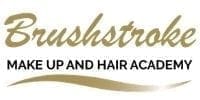What’s so great about working on a TV drama?
I love the creativity of the job and the fact that no two days are the same. There is an energy behind the scenes with the actors getting ready to perform and the backstage crew all working to a set timescale. The camaraderie of the whole crew working together on a project is addictive. All my family are involved in the industry, one way or another. I grew up backstage of theatres and TV studios and though I never saw myself as a performer, I always wanted to be involved as I love the buzz.
Tell us about working behind the scenes on the famous Eastenders
There’s a huge amount of talent and hard work behind a soap such as Eastenders which often goes unnoticed by the general public. The show is very fast-paced and there are often last-minute changes. This can be due to a switch in location, cast sickness or unavailability, as well as last-minute script changes. Consequently, you need to be very flexible and quick thinking. Everyone has a part to play so there are a strong team effort and an appreciation of each department’s input to the final project.
What goes on in the make-up chair?
Well, a lot of people take turns to sit in it! The turn around time for the make-up on a TV soap like Eastenders is really fast because we have so many actors to get through. On average it’s about 20 minutes for both hair and make-up per actor. Those requiring more in-depth work (such as a wig-fitting) get longer naturally but there isn’t the luxury of time you can get on some TV work and films.
Who is always good fun to make up?
I couldn’t possibly name names (but Danny Dyer is always good fun!).
What do you look for in a trainee make-up artist?
Trainees for long-term positions in make-up on a TV soap generally require a qualification. Brushstroke’s diploma courses lead to BTEC and ITEC make-up qualifications which are ideal. A hairdressing qualification, or salon experience, is also important. Trainees also have to do a practical (a make-up test and a hairstyle) to show their abilities. An employer will also be looking for a personality that will fit in with the rest of the team – someone who is willing to learn and be taught how things are done in that particular show. Personality is as important as ability!
Is there any further advice that you can give to newly trained make-up artists starting out in the industry?
Be keen and never turn down a job because you think it’s below you. You’ll always learn something and you never know who you will meet and what will come of it. Be flexible because hours, dates and locations change all the time and often at the last minute. Keep practising always, and watch and learn from other make-up artists. Everything you learn is of value as you never know when or what you will be asked to do. (Having your own car is pretty important too!)
Paula has worked at Brushstroke for 5 years, teaching all aspects of make-up and hair. One of the key people behind Brushstroke make-up training, she also assists with the running of our BTEC qualification and acts as an assessor.
2 Year Makeup & Hair Course (BTEC, Level 3 Diploma)
Our most thorough training to prepare you for a career as an artist in TV, film, stage and fashion.
1 Year
Hair & Barbering Course
ITEC Level 2 Diploma
An intensive course taught by Toni & Guy trained tutors to complete your training as a versatile artist.



